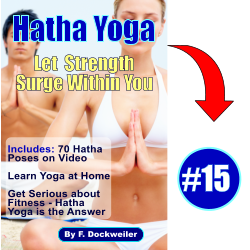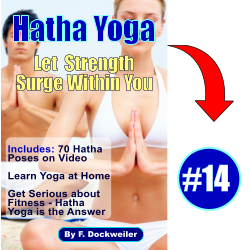It may seem absurdly contradictory for the word “warrior” to be associated with a gentle fitness discipline like Hatha Yoga. However, it is not the extreme belligerence or even ferocious cruelty that is connected to a fighter that is advocated or implied in the Warrior Pose.
In Hatha Yoga, we have the Warrior Pose, also known as Virabhadra’s Pose (Virabhadra is a “super-being,” a Spiritual Warrior), to remind practitioners of the need to cultivate a strong dislike for self-ignorance.
Of the Hatha Yoga poses, it can be said that the Warrior Pose is among those which strongly nurture the importance of having a clear mind and a strong body to achieve a high spiritual level.
Qualities of the Warrior Pose
In the article that discussed the four basic yoga poses, it was clarified how there is nothing even remotely threatening about the warrior pose…
Does this sound more like what you were expecting, or does the sound of this basic Hatha Yoga pose raise your hackles? Whatever your initial reaction may be, you will find out once you practice this pose that there is nothing even remotely threatening about it. As far as basic yoga poses go, the Warrior pose is meant for making your arms, shoulders, thighs, muscles of the back, as well as your ankles, stronger, thereby putting you in the right groove for further fitness development.
The truth behind this statement can be proven in the extensiveness of body parts toward which this pose can prove beneficial, from the head to the feet:
- Neck
- Shoulders
- Lungs
- Chest
- Back
- Abdomen
- Groin
- Thighs
- Legs
- Ankles
The Warrior Pose takes care of the body’s welfare, to allow you to be able to concentrate more fully on your main task at hand; the arousal of knowledge and wisdom, and the strengthening of your spirituality.
Demonstration of the Hatha Yoga Warrior Pose
Benefits of the Warrior Pose
- Mental – fuller concentration and higher levels of determination
- Physical – expands chest and lungs, stretches neck and shoulders, develops back muscles, and makes the thighs, legs and feet stronger
- Spiritual – develops endurance of spirit
Safety Alert
The Warrior Pose is not recommended for people who have cardiovascular problems, hypertension, and preexisting shoulder and neck problems. Preexisting problems should be cleared only upon the advice of a medical doctor. Of course, that goes for any of the poses discussed in this Hatha Yoga guide.
That wraps up this section on the “Warrior Pose” so be sure to head over to our home page and subscribe to the MyFitnessNut.com Newsletter to get access to the video above as well as 69 other Hath Yoga pose videos and get started with these postures. Next, we’ll dive into doing “Chair Yoga Poses” and open your mind to obtaining more stability in your life.









